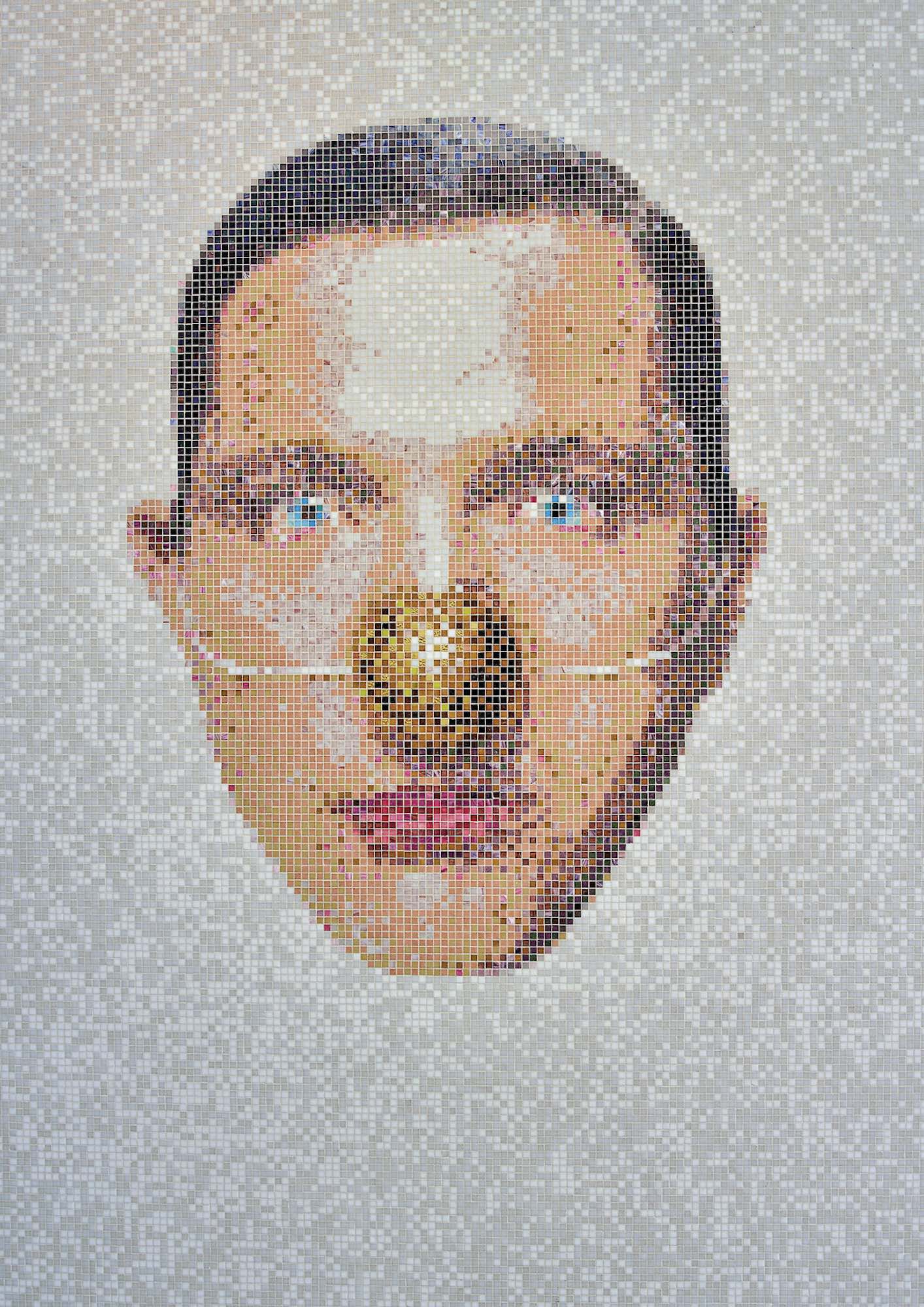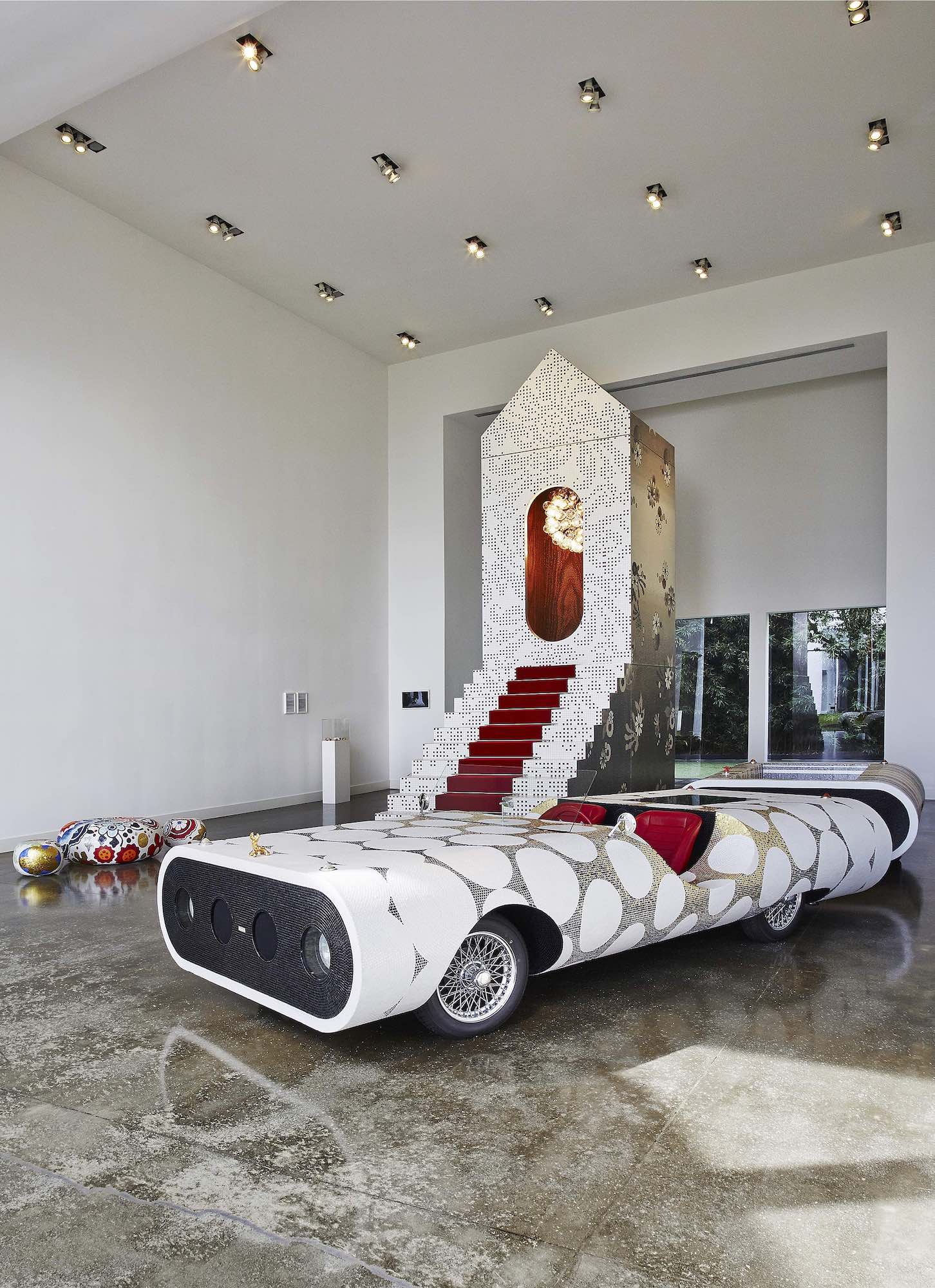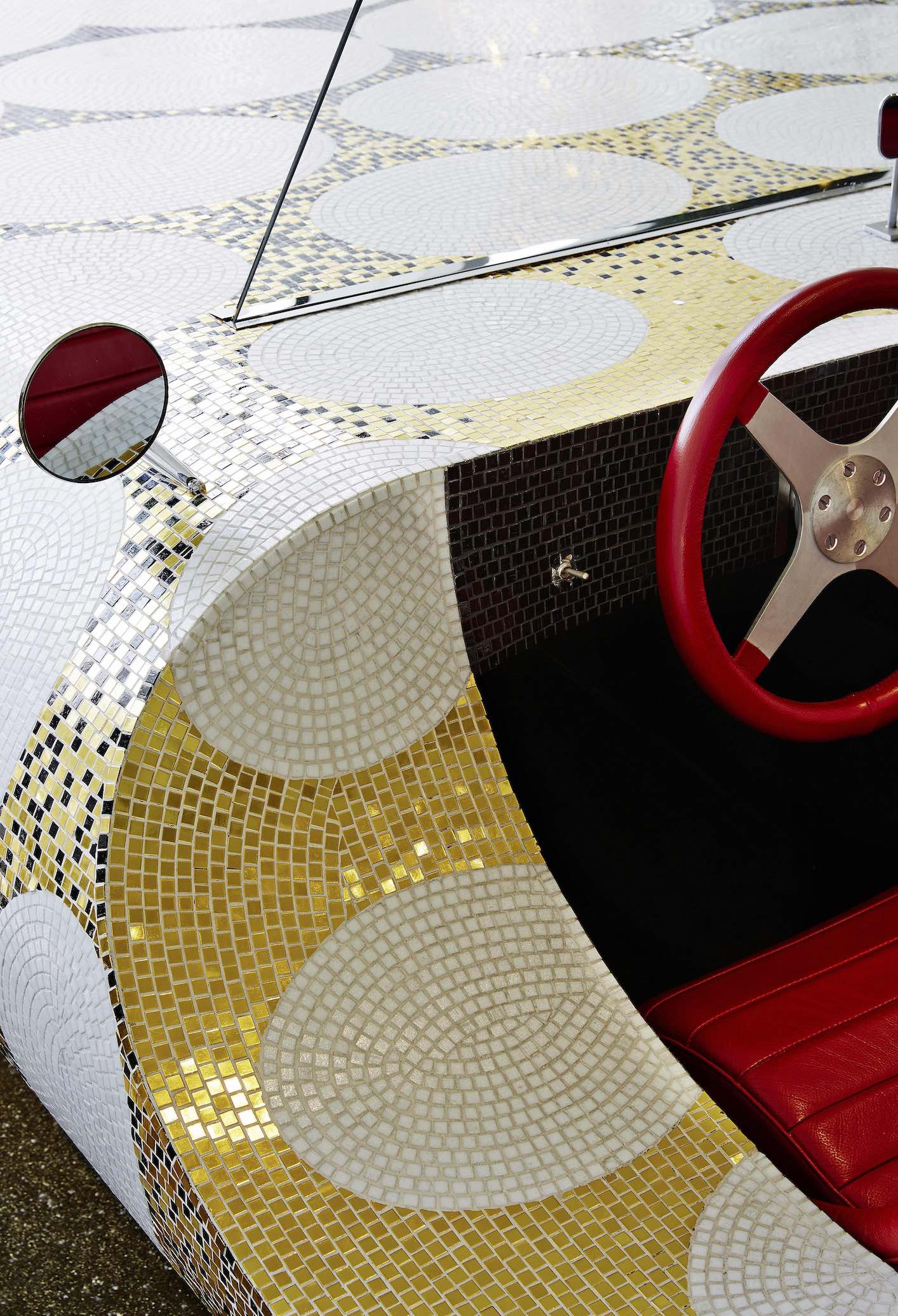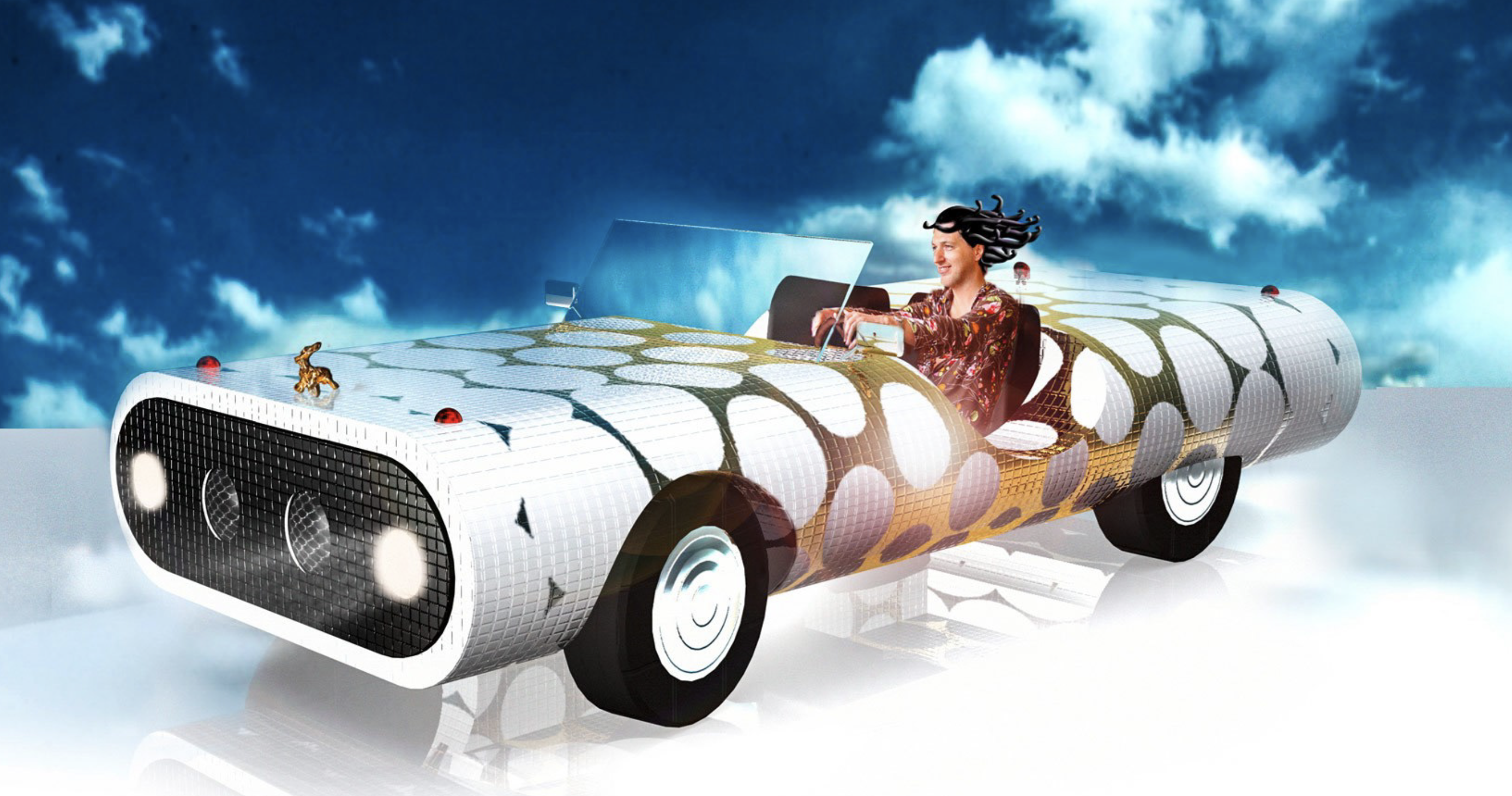Bisazza Motel
Marcel Wanders
...It has been said that for several years now designers no longer pay attention to detail and that surfaces have become the terrain of the superficial. It is time to revitalize them and give more attention and love to the part of the objects that we touch and see the most. Now the dream car for my vacation is real. After spending a good deal of time designing it, I asked Bisazza to cover this custom- made chassis with its beautiful mosaics. Now I can park my car, check into one of the hotel’s tiny rooms and hold meetings with colleagues and friends in bed. I ask you to consider this installation the perfect destination for my vacation.
Marcel Wanders
Born in the Netherlands in 1963, the Dutch designer’s aesthetic is marked by both daring and a sense of fun. As for his output, it is quite simply mind-boggling, with over 1,700 completed projects and a client list that includes the likes of Alessi, KLM, and Puma. His success no doubt has something to do with his philosophy that “we need to find ways to make design the most inspiring thing on Earth.”
His collaboration with Bisazza dates back to 2004. During London’s 100% Design show that year, he unveiled an installation entitled Bisazza Motel, which featured not only a one-room structure perched at the top of a flight of stairs, but also the mosaic-clad Ante-Lope car that tows a bathtub and can actually be driven! “This is the place you sleep with the girl you’re not married to,” said Wanders in his typically flamboyant style. “It’s kind of more sexy, it’s kind of more intimate, it’s kind of more the thing where you want to be. A hotel is where you have to be.”
Rather ironically, his Pebbles coffee tables made their way into a real-life hotel – the Wanders-designed Lute Suites in Amsterdam, which opened its doors in 2005. Covered in intricate hand-cut mosaics, the seven different models each bear a woman’s name.
Wanders’s scintillating 10-meter-long wall frieze Foliage, meanwhile, was first presented during the Salone del Mobile in 2008 and offers a modern take on traditional tapestry, with each 1 x 1cm tile taking the place of a cross stitch, painstakingly applied with unrivalled skill. As Wanders himself asserts: “I’m trying to listen for what the material wants to be.”
The patterns used throughout the designer’s installations – traditional fabric patterns, floral arrangements, textures from nature or photographic images – confirm the fairytale allure of Marcel Wander’s work. According to the designer’s vision, objects and environments should confer happiness on those who come in contact with them.



